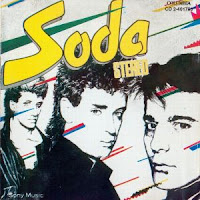
The art of music throughout Latin America has evolved among the numerous cultures of this large continent. Latin, tropical, samba, and even reggae are among the various music genres found throughout Latin America and the Caribbean. Although music has influenced these cultures, it has also established a strong trend and impact on the popular culture of today.
In Argentina, music has evolved through European and indigenous influences. Music genres developed in this country tend to differ throughout the various regions of Argentina. For instance, Chacarera and Chamame are two of the most known folkloric music genres along with Andean inspired music throughout the northern parts of the country. Other genres most popular Argentina include the most famous Tango, Argentine cumbia, Pop, Cuarteto, Jazz, Electronic, and Argentine Rock.
Derived from Colombian influence, the Argentine cumbia was adopted throughout the 1990s. This music became most popular throughout the lower class societies of Argentina and soon adopted some Caribbean rhythms and influences. The Cuarteto is more of a social danceable type of music that developed in the early 20th century. With a tropical rhythm, this music is also known as the merengue of Argentina. Electronic and Pop music have been some of the most recent adopted genres in this country. With a strong European and American
As Argentina is indeed a very unique country, its musical influences throughout the years have helped shape and establish the popular culture of today.
http://en.wikipedia.org/wiki/Music_of_Argentina
The country of Argentina in South America has many unique ways about their culture. From their accent and way of talking to their beautiful forms of dance, it is really an exceptional country rich in culture. The
dance that originated in 
recently traveled to
http://www.totango.net/sergio.html
http://www.centralhome.com/ballroomcountry/argentino_tango.htm
Rock n’ Roll music began in Argentina in the 1950’s. It evolved from an R&B base in the United States – with Elvis Presley and Bill Haley as great influences – and British Rock. Initially, Argentinean singers would make covers of Rock hits in English. “Los Shakers” was one of the first bands to do so in 1965 with their recreations of songs by The Beatles and The Rolling Stones.
Known as “Rock Nacional,” Argentinean Rock continuously developed over decades and became an international
genre in the 1980’s. It is considered the most successful form of “Rock en Español” (Rock music written and performed in Spanish). It was one of the first non-English language Rock forms to flouris
h outside of its country of origin. “Soda Stereo,” a trio that is argued to be the biggest and most influential Spanish band to date, originated in Buenos Aires.
Today, Rock continues to be a popular form of music in Argentina. Punk Rock, Heavy Metal, Fusion Rock and Alternative are among the sub-genres with a large fan base.
http://www.youtube.com/watch?v=WR1ZO7PY0bE
Argentina has two main kinds of folk music heard all over the country. The first is one that comes from several original indigenous cultures and the second is Creole music. Brought by the Spanish colonist, Creole music has evolved significantly. The European dances, religious music, instruments, and festivals were brought by immigrants and have influenced the Creole music to what it sounds like today.
Each region in Argentina has different characteristics because of its geography and climate. “Each has cultural characteristics of its own.” One region that still retains much of its indigenous folk music is the southern region of Patagonia, which has been undisturbed by visitors or colonists over the years. In the northwest near Jujuy, the music is greatly influenced by its surrounding countries like Bolivia, Peru, Paraguay and Chile. It also has some traditional music including characteristics of the Incas. In the central region of Argentina, around Córdoba, the original traditional music has disappeared. This is due to the new style of dance music called cuarteto that has become extremely popular and successful for the recording industries. Also, in the plains area called La Pampa, the dances are lively but the songs are often slow and quiet. Lastly, in the northeastern part, the European dances like the polka, waltz, and schottische, has been accepted by the indigenous people.
http://www.spanishabroad.com/argentina/countryguide/music_dance.htm



No comments:
Post a Comment